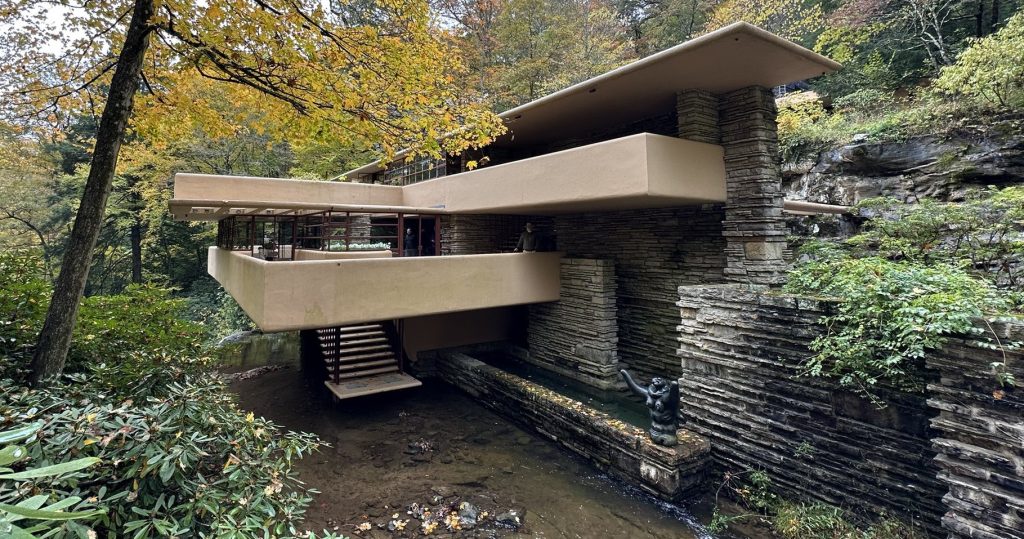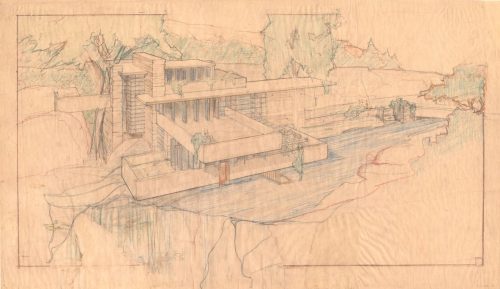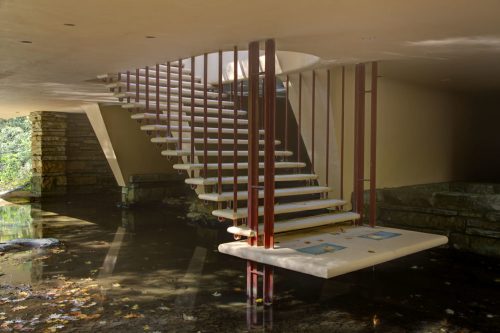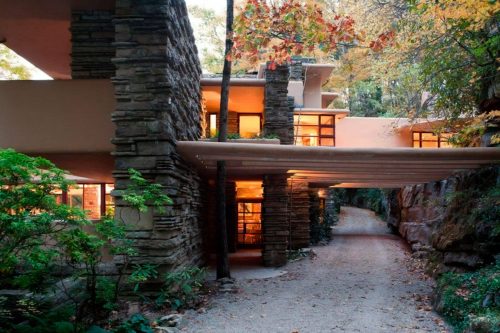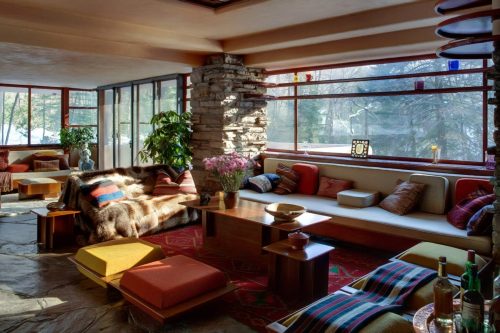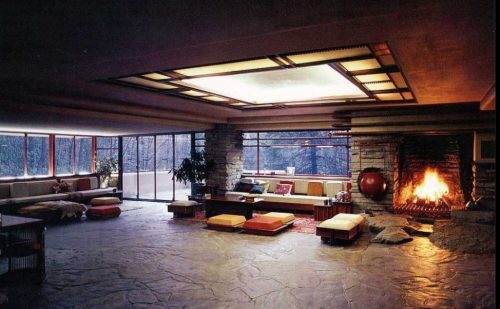2023.11.01 – Lecture 3
Fallingwater by Frank Lloyd Wright (1935-1937, 1939) is one of the architectural masterworks of the 20th century, at the height of the Modern movement. An Organic architecture, combining the continuity of concrete with natural stone, walls of glass and cantilevering garden terraces, to reconnect living with outdoors.
Design parti: Laura Gale House (Frank Lloyd Wright, 1909) projecting Froebel block massing in four cardinal directions as the bedroom cantilevering terraces set atop Robie House (Frank Lloyd Wright, 1909) linear horizontal infinite extension as the living room cantilevering terraces paralleling Bear Run stream.
Theoretic postulate: house placed atop waterfall, becomes the waterfall, negating visual sight of waterfall from inside the house, heightens secondary perceptual sensibilities of waterfall (sound, smell, feel).
Schematic strategy: compression of space within narrow passage thresholds at entries and stairs, building sense of confinement as when walking in forest thickets, drawn toward a clearing, the open terraces flooding light into the interiors.
Modern manifesto: expanding on Le Corbusier’s Five Points of a new architecture, 1. grid of pilotis (elevating structure off ground) becomes cantilevering structural concrete slabs eliminating need for pilotis; 2. rooftop garden (doubling ground area) becomes cantilevering terraces (quadrupling ground area); 3. free plan (non-load bearing interior walls) becomes open plan (without interior walls); 4. ribbon window on 5. free facade becomes continuous glass enclosure with corner windows eliminating exterior facade.
Material execution: traditional post and beam structure of single dimensional linear elements, replaced by an organic architecture of continuity in the tenuity of cantilevered slabs as two dimensional planes, utilizing the tensile strength of steel reinforced concrete (precursor to the parametric skins, three dimensional volumes, eliminating distinction between wall, roof and ground).
Leitmotif: new sense of spaciousness requires significant cover as shade, solidity of walls vanishing as screens of light, sense of enclosure lost by deconstructing the box, interior flowing continuously with exterior, overhead shelter becomes significant form, providing comfort and safety burrowing within the darker recesses of the room, as in a Japanese temple shading light.
Lecture Video – Part 1 (55 min.):
Lecture Video – Part 2 (38 min.):
Lecture Audio – Full (1 hr. 36 min.):
Download Lecture Chat
Further Reading:
Frank Lloyd Wright: Rebel Architect (The Objective Standard, 2023.11.23)
Frank Lloyd Wright Drawings (Avery Architectural & Fine Arts Library)

